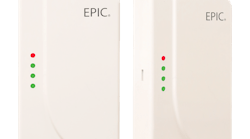What is the difference between “should” and “shall” when it comes to code compliance and building resiliency? In terms of natural disasters, the difference can mean saving lives in communities struck by tornados and hurricanes.
In 2007, a tornado struck a high school in Enterprise, Alabama, killing nine individuals. When a tornado struck the southern Missouri city of Joplin in May 2011, it killed 161 people, caused 2 billion dollars in damage, and destroyed the unoccupied high school. Two years later a tornado struck Moore, Oklahoma and leveled the Plaza Towers Elementary School, killing seven students.
The question these types of incidents raise is what more can we do? What must we be doing?
Defining Resiliency
Recent editions of the International Building Code prescribe the mandatory requirements for tornado shelter construction. This is a dramatic change from a decade ago when there was still a notion that ordinary buildings could be constructed to withstand tornadic forces. Now buildings within some tornado zones are dictated by law to provide protection for human life. Code compliant shelters must be able to withstand the force of a category F5 tornado.
This change to the Building Code and the resulting design practices will save lives. It illustrates the difference between “should” and “shall.” It also defines the importance of resiliency in our buildings: we must construct our most important places in ways that protect human lives. However, protecting lives goes beyond just ensuring people survive a traumatic event such as a tornado or hurricane.
Particular assets in a community become critical in the aftermath of a storm. Consider the importance for first responders – and their equipment – to mobilize after a disaster strikes. Think of the need to protect the assets within select hospitals, especially in the event patients must be temporarily relocated from other healthcare facilities. What about the ability of markets to reopen and provide food and water? With cellular services and internet access being so critical to disaster response, how important is it that the local utilities can protect their assets and keep them up and running?
Yes, help is likely to be arriving from outside the community, but that will take time. The onus of being resilient as a community rests at the feet of all business owners, building owners, and local governments. Resiliency isn’t just for storm shelters and government buildings. It is a critical factor everyone must consider because these choices can save lives. It includes robust security, storm protection, and independent or redundant systems.
So how do you plan for resilience? Consider the following issues and whether they affect the communities you help protect.
Tornados
Implementing tornado resistant solutions on the building’s exterior – from the roof to the walls to the doors and windows – is critical in ensuring the building is resistant to the high winds and debris impacts of the storm. For door opening assemblies, it’s important to be code compliant by utilizing products that are tested and certified to the ICC 500-2014 standard and, when necessary, are specified for FEMA compliance as well.
The goal of proper design and product specification is not to save the building itself, but to ensure the people and assets inside of a tornado-affected building survive. Openings do not need to operate in the aftermath of a tornado, but rather must stay intact until it is safe to evacuate or first responders can arrive on the scene to extract the occupants.
Meanwhile, business resiliency in tornados is about ensuring there is redundancy in other areas. For office spaces, this might mean ensuring data is backed up off-site. For government buildings and emergency response buildings, this may mean partnering with nearby jurisdictions for response training.
Hurricanes and Floods
A hurricane is substantially different from a tornado in that we expect a building to be recommissioned and operational within a reasonable time and financial expenditure after the storm. The goal in a hurricane is typically to evacuate occupants and to have designed the structure to ensure doors, windows, walls and roofs remain in place to protect the interior and contents of the structure.
Wherever hurricane evacuation zones exist, there must be critical infrastructure and shelters to provide refuge, often for a week or longer. Therefore, critical civic buildings such as hospitals, fire stations, police stations and schools need to take a “defend in place” approach for design and emergency preparedness. This requires close coordination of many community resources, as well as robust design solutions for the built environment. It means being acutely aware of what type of natural forces are likely to be encountered, ensuring the openings are impact resistant, and that they have been certified by a third-party agency such as Underwriters Laboratories or ITS-Warnock Hersey.
An additional design consideration for these buildings is a level of resiliency in electronic access control systems. Stand-alone access control units – where power and credential management is done on the device and not dependent on an external network or power grid – can mean that areas of the building remain locked yet accessible as long as they remain above the water line. This consideration extends to all buildings that need to protect specific assets in the event of a hurricane or flood.
No Universal Solution
A common question we get in the openings industry is “can you just give me the best thing you’ve got?” The answer is yes, we can, but the best solution will vary based on your specific needs.
For example, if you have an opening at ground level, it will have different needs in a hurricane event because of potential flooding and the way wind pressure and debris will affect that location. A rooftop door on the same building will likely be subjected to higher pressure and will have a different rating requirement. Neither solution is better than the other - both are best for their specific application.
Different levels of protection may also be required for scenarios not related to weather. Attack resistant doors capable of repelling a physical assault, radio-shielded openings for protection of critical communications, thermally insulated doors for energy efficiency, and sound transmission control doors are also available and worthy of consideration when planning for these environments.
A best practice for end users is to partner with integrators and manufacturers to discuss their needs and goals early in the design phase. For integrators, the approach should be to take on a collaborative role in disaster planning in their community and to seek out a manufacturer that is knowledgeable about codes and requirements for the area. For manufacturers, the best course is to listen to the needs of those most affected by these events, work with integrators and end users on code requirements and best practices, and to specify products and solutions that directly respond to those needs.
About the Author:
Kurt Roeper is the Director - Industry Affairs, Codes & Standards for ASSA ABLOY Americas. Since 2002 he has been a member of the ICC Consensus Committee on Storm Shelters, ICC 500 – “Standard for the Design and Construction of Storm Shelters”.
With an extensive background in fire safety, means of egress and accessibility, he is also a member of many code writing committees including “NFPA 101 Life Safety Code “, “NFPA 5000 Building Construction & Safety Code”, “NFPA 80 – Standard for Fire Doors & Other Opening Protectives”, and “ANSI A117.1 – Accessible and Usable Buildings and Facilities”.
Roeper has been in the commercial openings industry for over 25 years, serving in a variety of technical and management positions. His involvement in building and life safety codes, testing and product certification spans his career with extensive work in North American, Latin American, European and Asian markets.


